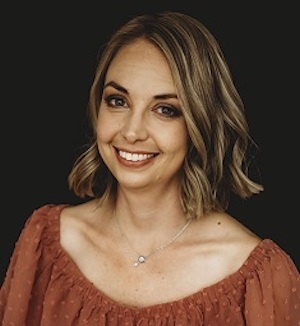Each time NeighborWorks America hosts one of its trainings for housing and community development professionals, there are new courses and new ways of looking at and finding solutions to issues. For this week’s Winter Virtual Training Institute, held Feb. 6-10, one of those courses will focus on a topic that has been an integral part of NeighborWorks since its inception – but is now being discussed in new ways.
"Comprehensive community development" is the term community developers use when talking about intentional ways to help the whole community and the many intersecting issues that residents face. Supporting NeighborWorks network organizations in furthering their goals surrounding this concept is now a part of NeighborWorks’ strategic plan. And a new course, "Comprehensive Community Development: Why it Matters," will help community developers understand more about the pillars behind the strategy.
 Three instructors will teach the 90-minute interactive webinar, and one of them is Alys Mann, a housing and community development consultant. "This course asks participants to think more holistically and more intentionally about the places they are doing work in," says Mann, who will be joined by Marcia Nedland and Eileen Flanagan. "We know that the place where people live can have long lasting impacts on their lives in a variety of ways." That includes health, education, job opportunities, wealth building opportunities, and more.
Three instructors will teach the 90-minute interactive webinar, and one of them is Alys Mann, a housing and community development consultant. "This course asks participants to think more holistically and more intentionally about the places they are doing work in," says Mann, who will be joined by Marcia Nedland and Eileen Flanagan. "We know that the place where people live can have long lasting impacts on their lives in a variety of ways." That includes health, education, job opportunities, wealth building opportunities, and more.
Comprehensive community development highlights why it’s important to understand the history of the community and to assess the community through an equity lens, Mann says. It also stresses the importance of partnerships, getting business lines to work together and – and this is crucial – involving residents. The course will include ideas for undertaking comprehensive community development and will discuss case studies of organizations that use comprehensive community development models. Participants will also receive resources and tools.
Mann shares, "I hope that others will walk away with some new ideas about how they might take the work they do in communities to the next level. I also hope that folks have a fuller understanding of the importance of thinking strategically about a place and have some ways to bring that information back to colleagues and others they work with."
An organization can become more intentional about how they implement a strategy in a community, for instance.
"If the group does home renovations, they might consider which properties would make the biggest impact on the community – like renovating a home on a travel corridor or across from an important asset like a school – rather than just choosing properties in a more opportunistic approach," Mann says. "Obviously, the numbers need to work, but this is an example of thinking more strategically about what ways the strategy can be implemented to make the biggest impact and get closer to the desired outcomes for the community."
NeighborWorks has awarded grants to organizations who are exploring ways to engage in this type of development – and organizations that have been doing it and want to advance to the next level. The concept has also become a part of NeighborWorks’ strategic plan.
"We see comprehensive community development as being foundational to achieving NeighborWorks' vision that every community is a place of opportunity," explains Paul Singh, NeighborWorks America's vice president of Community Initiatives. "It advances a shared vision among nonprofits, anchor institutions, cross-sector partners, local government and – most of all – residents themselves."
The comprehensive community development course will be offered Wednesday at 12:30 p.m. during the Winter Virtual Training Institute and as part of NeighborWorks America’s Community and Neighborhood Revitalization course track. In May, at NeighborWorks training in San Francisco, follow up with Developing High-Impact Neighborhood Revitalization Strategies, Community Development: Past, Present and Future and Getting Things Done in Neighborhoods through Strategic Collaborations.
02/07/2023

